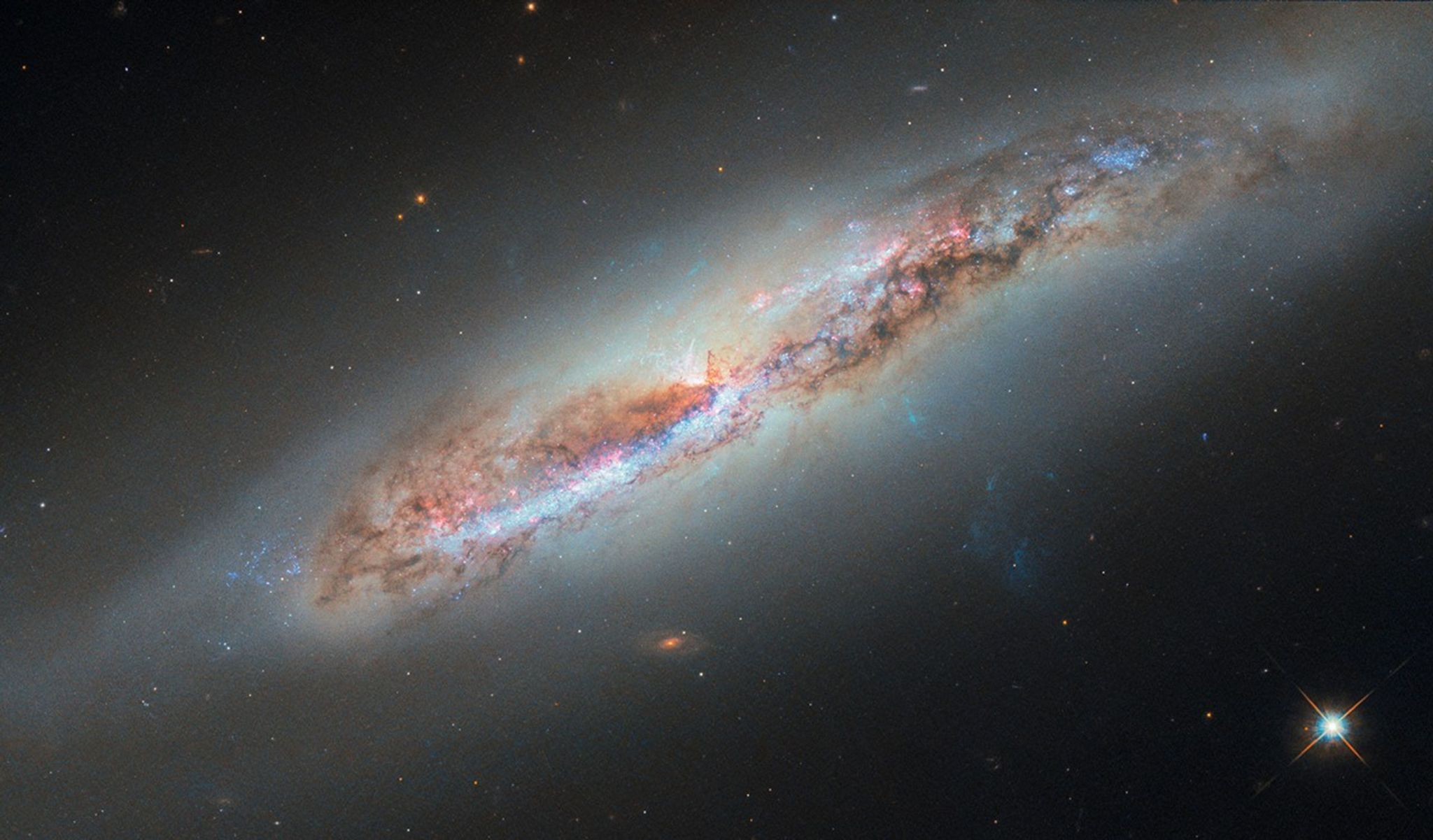Data from NASA's WISE mission have led to the discovery of two clusters of newborn stars thousands of light-years below the plane of our galaxy.
from News and Features - NASA's Jet Propulsion Laboratory http://ift.tt/1zmRVni
via IFTTT
Data from NASA's WISE mission have led to the discovery of two clusters of newborn stars thousands of light-years below the plane of our galaxy.
Like a cowboy at a rodeo, NASA's newest Earth-observing satellite, the Soil Moisture Active Passive (SMAP), has triumphantly raised its "arm" and unfurled a huge golden "lasso" (antenna).
A new study of Earth's ionosphere, a part of the upper atmosphere, could have applications for better GPS communications.
Sample-collection drilling that NASA's Curiosity Mars rover completed Tuesday will likely be the last before the rover departs "Pahrump Hills."
Dwarf planet Ceres continues to puzzle scientists as NASA's Dawn spacecraft gets closer to being captured into orbit around the object.
Mission controllers at JPL today sent commands to unfurl the massive reflector antenna on NASA's new Soil Moisture Active Passive (SMAP) observatory, launched Jan. 31.
NASA's Curiosity Mars rover used the camera on its robotic arm to record the pieces of a portrait that shows the rover within a panorama of the area it is studying.
JPL will host a briefing Monday, March 2, about the March 6 arrival of NASA's Dawn spacecraft at the dwarf planet Ceres. The event will be carried live on NASA TV and online.
NASA's Nuclear Spectroscopic Telescope Array (NuSTAR) and ESA's (European Space Agency) XMM-Newton telescope are showing that fierce winds from a supermassive black hole blow outward in all directions -- a phenomenon that had been suspected, but difficult to prove until now.
Craters and mysterious bright spots are beginning to pop out in the latest images of Ceres from NASA's Dawn spacecraft.
NASA's Voyager 1 spacecraft showed its love for the solar system, including Earth, with these images on Feb. 14, 1990.
Views of Saturn's hazy moon Titan now appear much sharper, thanks to a technique that greatly improves radar images taken by NASA's Cassini spacecraft.
Two JPL researchers have been elected to the National Academy of Engineering, the highest professional distinction for engineers.
An upbeat-looking galaxy cluster appears to smile at us in a newly released image from the NASA/ESA Hubble Space Telescope.
Origins of crunchy crusts on comets explained in new laboratory research.
Since landing on Mars in January 2004, NASA's Mars Exploration Rover Opportunity has driven nearly as far as a marathon footrace.
NASA's Mars Reconnaissance Orbiter has exceeded 40,000 trips around Mars and continues to study patterns of change on the Red Planet.
NASA's Curiosity Mars rover is analyzing a rock-powder sample collected by using the rover's drill in a gentler manner than at previous drill targets.
New data from Planck are helping scientists better understand the history and fabric of our universe, as well as our own Milky Way galaxy.
NASA's Dawn spacecraft, on approach to dwarf planet Ceres, has acquired its latest and closest-yet snapshot of this mysterious world.
NASA is part of a major field campaign studying intense atmospheric river storms from the ocean, land, air and space.
NASA's Mars Reconnaissance Orbiter recently caught a view of NASA's Curiosity Mars rover studying an outcrop at the base of a Martian mountain.
Arcadia High School triumphed over 23 other teams at the National Science Bowl regional competition held at JPL on Jan. 31.
This NASA/ESA Hubble Space Telescope image features the galaxy NGC 4388, a member of the Virgo galaxy cluster. ESA/Hubble & NASA, ...
